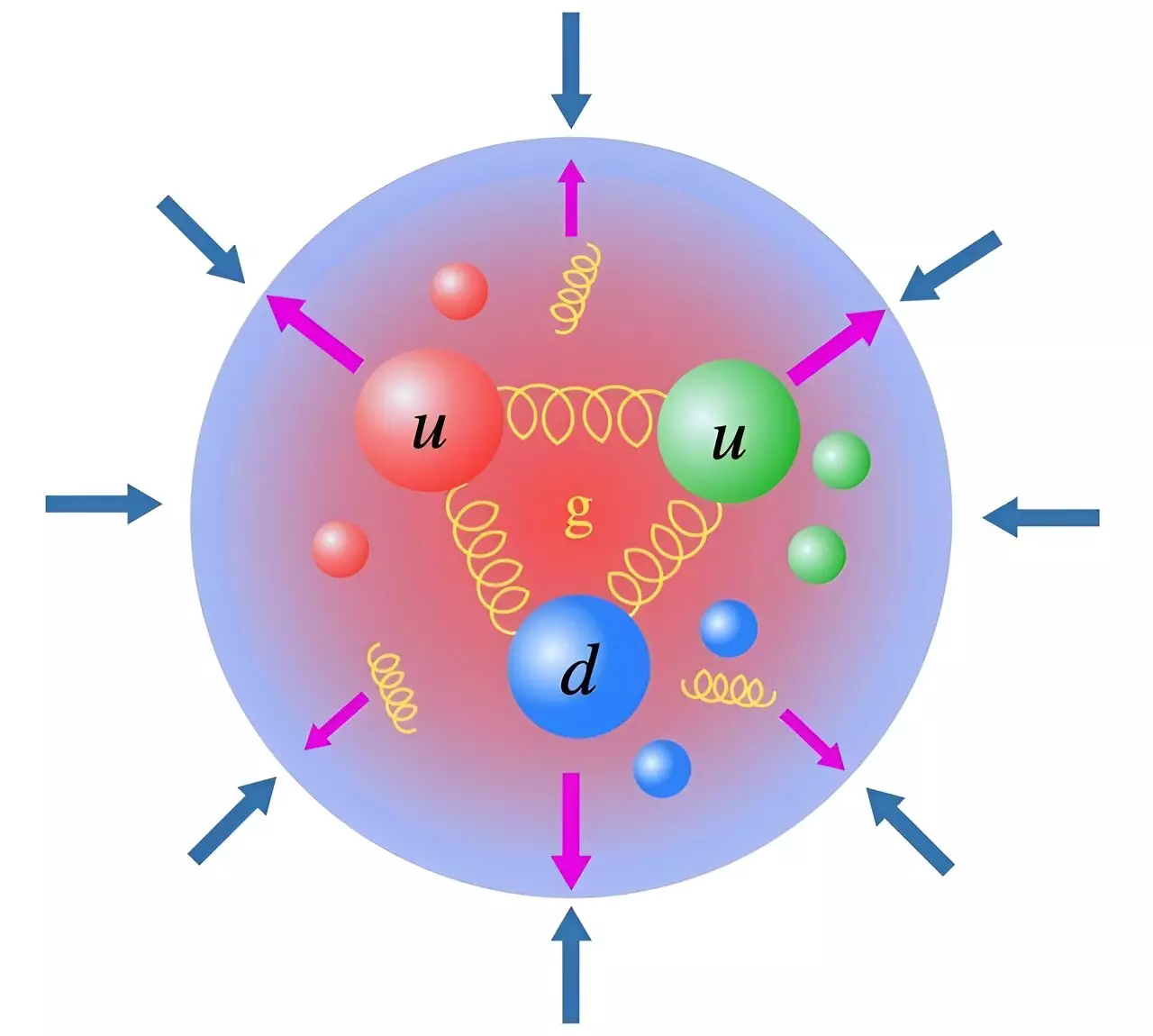Quantum chromodynamics (QCD) serves as the foundation for investigating the forces operating within atomic nuclei, as well as the protons and neutrons that constitute them. One of the key areas of focus in QCD research is the examination of how quarks and gluons are confined within nucleons. While the forces inside nucleons can be mathematically likened to gravity, the presence of quantum effects such as the “trace anomaly” introduces deviations from the expected behavior. These quantum effects play a crucial role in maintaining the equilibrium between the internal pressure within nucleons and the cohesive forces that hold them together.
Recent studies have demonstrated that the trace anomaly can be quantified through the production of charmonium particles, which are generated at facilities like the Thomas Jefferson National Laboratory and the Electron Ion Collider. By combining experimental data on charmonium production with theoretical calculations based on QCD principles, researchers can gain valuable insights into the distribution of mass and pressure within hadrons – particle entities comprising quarks and gluons.
Both hadrons and superconductors exhibit similar mathematical frameworks when it comes to understanding how particles are constrained within a specific volume. Remarkably, this concept bears resemblance to the function of the cosmological constant and dark energy in the context of energy and pressure within the equations that describe the expansion and acceleration of the universe. The ability to measure the trace anomaly experimentally and compute it using lattice QCD offers researchers a direct avenue for exploring and comprehending the intricate dynamics of quantum chromodynamics.
The interconnectedness of energy, pressure, and confinement extends beyond the realm of nuclear physics and permeates various physical systems ranging from microscopic to cosmic scales. By elucidating the common threads that run through different phenomena in physics, such as those related to the behavior of subatomic particles and the dynamics of the universe’s expansion, researchers can forge a unified understanding of the underlying principles governing diverse aspects of the physical world.


Leave a Reply
You must be logged in to post a comment.